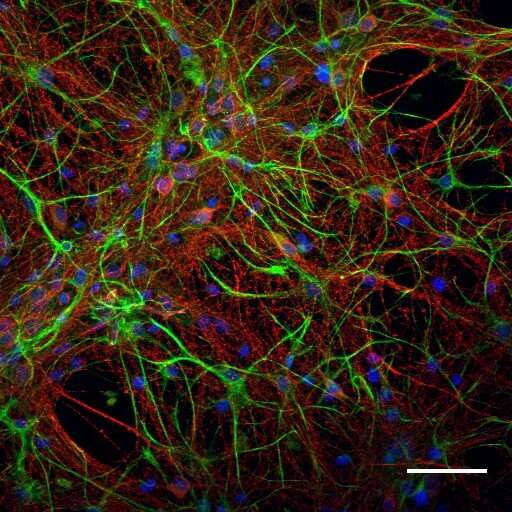Efficient, interconnected, stable: New carbon nanotubes to grow neurons

Carbon nanotubes able to take on the desired shapes thanks to a special chemical treatment, called crosslinking and, at the same time, able to function as substrata for the growth of nerve cells, finely tuning their growth and activity. The research just published in ACS Nano, the prestigious international scientific journal, is a new and important step towards the construction of neuronal regenerative-interfaces to repair spinal injuries. The study is the new achievement of a long-term and, in terms of results, successful collaboration between the scientists Laura Ballerini of SISSA (Scuola Internazionale Superiore di Studi Avanzati), Trieste, and Maurizio Prato of the University of Trieste. The work team has also been assisted by CIC biomaGUNE of San Sebastián, Spain.
Self-standing nanotubes
The carbon nanotubes used in the research have been modified by appropriate chemical treatments: "For many years, in our laboratories we have been working on the chemical reactivity of carbon nanotubes, a fascinating but very difficult material to work. Thanks to our experience, we have crosslinked them or, to say it more clearly, we have treated the nanotubes so they could link themselves to one another thanks to specific chemical reactions. We have discovered that this procedure gives the material very interesting characteristics. For example, the material organises itself in a stable manner according to a precise shape, we choose: a tissue where nerve cells need to be planted, for example. Or around some electrodes" explains Professor Prato. "We know from previous research that nerve cells grow well on carbon nanotubes so they could be used as a surface to build hybrid devices to regenerate nerve tissues. It was necessary to ensure that this chemical modification did not compromise this process and study whether the interaction with neurons was altered."
Towards biosynthetic hybrids
Professor Ballerini continues: "We have discovered that the chemical process has important effects because through this treatment we can modulate the activity of neurons, in terms of growth, adhesion and survival. These materials can also regulate the communication between neurons. We can say that the carpet of crosslinked carbon nanotubes interacts intensely and constructively with the nerve cells." This interaction depends on how much the different carbon nanotubes are linked to each other, or rather crosslinked. The lower the link number among the nanotubes the higher the activity of neurons that grow on their surface. Through the chemical control of their properties, and of the links between them, it is possible to regulate the response of the neurons. Ballerini and Prato explain: "This is an intriguing result that emerges from the important and fruitful collaboration between our research groups involving advanced research in chemistry, nanoscience and neurobiology . This study provides a further step in the design of future biosynthetic hybrids to recover injured nerve tissues functions."
More information: Myriam Barrejón et al, Chemically Cross-Linked Carbon Nanotube Films Engineered to Control Neuronal Signaling, ACS Nano (2019). DOI: 10.1021/acsnano.9b02429
Journal information: ACS Nano
Provided by International School of Advanced Studies (SISSA)



















